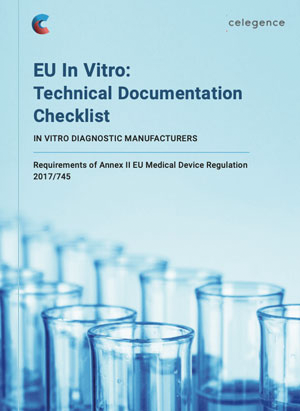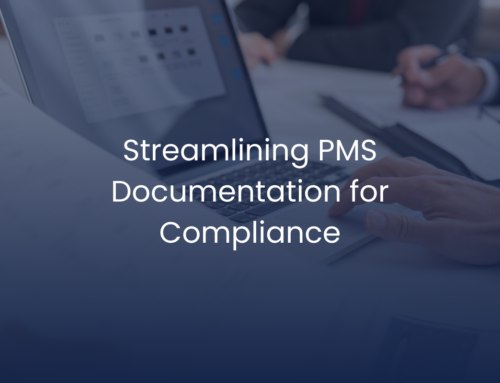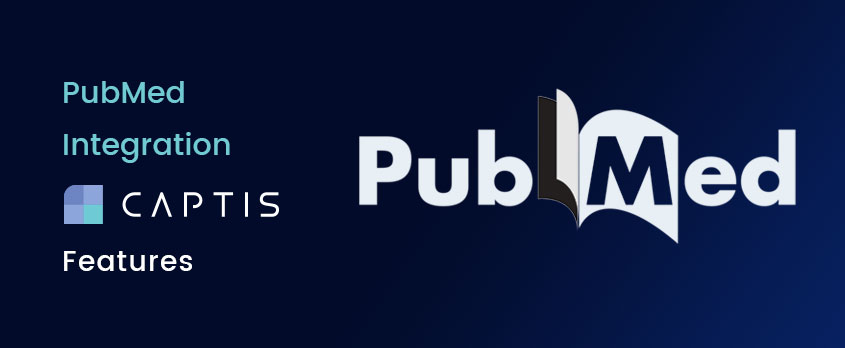
PubMed Integration – CAPTIS™ Features
In this post we’ll discuss how the CAPTIS™ PubMed Integration helps medical writers complete their literature reviews quicker.
Literature searches are a key part of clinical evaluations, usually involving countless hours of work. Medical writers and clinical experts compile scientific publications as a part of their literature review for various reasons ranging from gathering evidence for claims made on the device, documenting the state of the art and most importantly, to provide proof of the reliability, effectiveness, and clinical value of the device under evaluation.
Literature Search Strategy
Any gaps that clinical data cannot answer must also be covered in the literature review. In order to uncover relevant literature and evaluate it, a librarian or a medical writer with knowledge of choosing the right search keywords and experience using scientific research databases like PubMed or Embase must be involved.
For regulatory documents created to satisfy requirements of the EU MDR or IVDR, one of the key components that notified bodies are interested in is your literature search strategy.
A search strategy is a plan to find relevant literature, including details of the databases searched, and the keywords and search filters used. There must also be a systematic and unbiased way of analyzing said literature which essentially translates into the inclusion and exclusion criteria used in the title and abstract screening, and the appraisal method used in the full text evaluation.
While one can use focused searches, i.e., input keywords in a database and pick articles that seem relevant, this is not a systematic approach and may result in an observation from the Notified Body citing risk of bias. Cherry-picking evidence is a crime in the regulatory world and re-doing your report’s literature section within your notified body response time will take time and effort (and blood, sweat and tears).
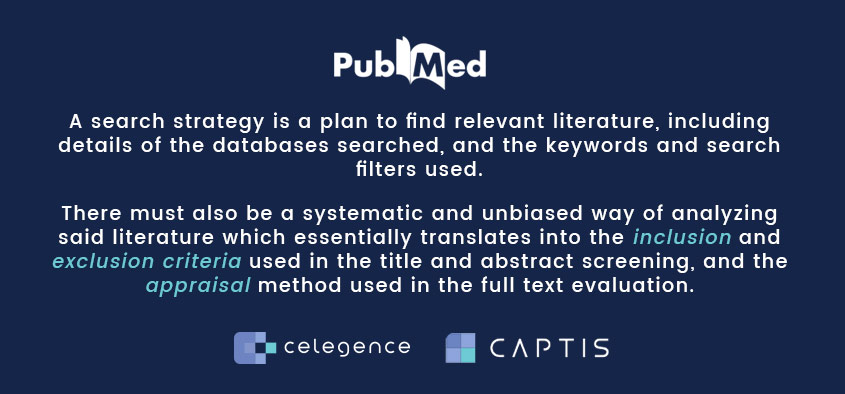
To have a more focused and smaller literature dataset to review and to get to your relevant literature quicker, writers should use search strings instead. Databases like PubMed allow combinations of multiple keywords using Boolean operators such as AND, OR, and NOT which can greatly reduce the number of hits and give you more refined and productive results.
Apart from search strings, other parameters can come into play when building a search strategy, such as the chosen date range for the clinical or performance evaluation. A defined start and end date range helps you get to the latest research and limit the number of overall hits. You can also use filters for article types such as meta-analysis, systematic review, clinical trial, review etc. depending on the type of publications you’re interested in.
While there are no limitations on the filters used when searching PubMed, ensure that your search strategy is not limiting and returns a sufficient number of articles to review. Needless to say, a “sufficient number” is subjective and will depend upon various factors such as the device’s time in the market and it being a popular topic of research. However, do not forget that the goal of a literature evaluation is to provide an unbiased picture of the device’s safety and performance in the market, and not to have a comfortably small literature dataset to review.
Another key feature of a literature search strategy is its reproducibility. One should be able to arrive at the same literature dataset even if the same search parameters are run on a different date. Hence, the strategy must be documented accurately.
The checklist highlights all of the documentation that you will need in place for certification of your IVD device and will serve as a guide to help you achieve ongoing compliance. In conjunction with this checklist, we are also able to provide you with bespoke strategies to bring your business up to speed. We are currently working with businesses from the United States, India, and throughout Europe to ensure that they are ready for the deadline in May of 2022.
Example of a Search Strategy Using PubMed Integration
Below is an example of a record of a search strategy which includes the database searched, date of search, search terms, all the filters used, and the applied date range. Recording the search strategy is an integral part of the report writing process and serves as the backbone of the literature review within your clinical evaluation or performance evaluation.
| Database | Date of Search | Search Terms | Filters | Results |
|---|---|---|---|---|
| PubMed | Mar 27, 2022 | (((head OR neck OR brain OR cranial) AND (tumor OR lesion OR cancer) AND (radiotherapy OR “radiation therapy” OR teleradiotherapy OR teletherapy OR “external beam radiation therapy” OR “IMRT” OR “intensity modulated radiation therapy” OR “VMAT” OR “volumetric modulated radiation therapy” OR “SRS” OR “Stereotactic Radiosurgery” OR “image guided radiation therapy” OR brachytherapy OR “3D conformational radiation therapy” OR “helical tomotherapy”)) AND ((trial OR “meta-analysis” OR “metaanalysis” OR “Systematic review” OR “SES”) AND (patient OR clinical))) NOT (breast OR prostate OR lung OR pancrea* OR hepatic OR Cervical OR stomach OR colon* OR renal OR liver OR spine OR spinal) |
|
460 |
| PubMed | Mar 27, 2022 | (chemo* AND surgery AND radio*) AND (“head and neck” OR brain) AND cancer AND (“Tumor control” OR “Tumor volume reduction” OR “Survival rate” OR “Mortality Rate” OR “Recurrence” OR “quality of life” OR “Progression free survival”) |
|
222 |
Key Pain Points with Manually Documenting the Search Strategy
- Time Consumption: As soon as the search parameters are finalized, one must promptly record all elements of the search in a separate document or an excel sheet. Oftentimes, highly skilled team members are spending many hours collecting these data elements and making them uniform in a spreadsheet.
- Human Error: Human error can occur when copying and pasting search strings; even a missing filter or quotation mark would mean that your record of the search strategy is inaccurate, and the search is no longer reproducible but with the CAPTIS™ PubMed integration human error is minimized.
PubMed Integration Within CAPTIS™
The PubMed Integration is a native feature within the CAPTIS™ platform; i.e., users can search PubMed directly via the CAPTIS™ search module, similar to the Google Scholar Integration. If you conduct your literature searches through CAPTIS™, all search elements including the date of the search, filters used etc. are recorded by the platform and a search strategy is automatically documented within your project. This strategy is available in the form of a report which can be easily exported and plugged into your CER or PER or any other document utilizing a literature review.
Experienced literature reviewers will acknowledge that compiling literature results is a trying task. But it doesn’t have to be.
CAPTIS™ imports all article identifiers like the article title, authors, publication details, abstract, and links to the original PubMed article automatically. In addition to that, it also deduplicates the list of articles for you; hence, there are no secondary exports or steps required to fully document the process and users can begin their literature evaluation immediately. CAPTIS™ handles the mundane aspects of a literature search for you, so that you can focus your time on the actual analysis involved in the systematic literature review.
Benefits of using PubMed Integration within CAPTIS™
Here are some of the benefits of using the PubMed Integration feature within CAPTIS™:
- Direct Integration: Users can search and save directly through CAPTIS™, and hence save time by not needing to collate results from multiple searches into a single document.
- Automatic Record of Search Strategy: CAPTIS™ accurately records all the search parameters used when running a search and presents the same in the form of a ready-to-use report.
- Simplified and Automatic Import of Abstracts: PubMed CSV exports do not contain the abstract field. Writers must utilize other tools to obtain and compile abstracts to their master screening list of articles. CAPTIS™ automatically imports all article abstracts and allows users to export the entire dataset in a CSV format, if required.
- De-duplicated Data: The advanced de-duplication algorithm within CAPTIS™ ensures that you always have a duplicate-free list of articles to review.
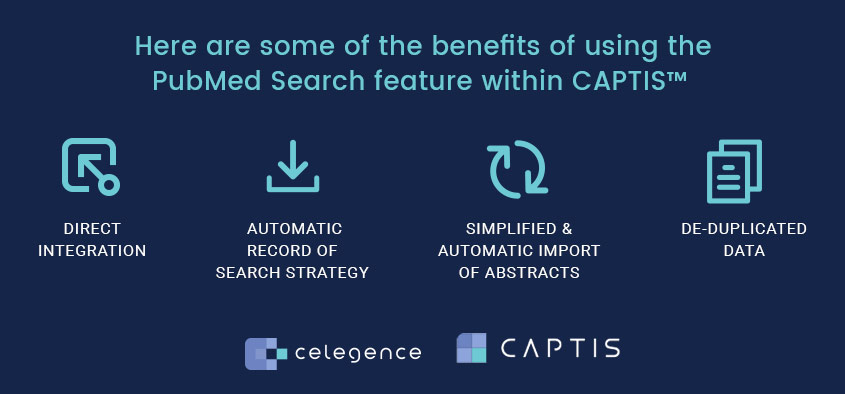
Schedule Your CAPTIS™ Demo
Your medical writing team can benefit from CAPTIS™ with faster turnaround times for systematic literature reviews and more accurate end-to-end MDR/IVDR documentation support. To learn more and view a comprehensive demo of CAPTIS™, reach out to info@celegence.com today or contact us online to connect with a Celegence representative.
The checklist highlights all of the documentation that you will need in place for certification of your IVD device and will serve as a guide to help you achieve ongoing compliance. In conjunction with this checklist, we are also able to provide you with bespoke strategies to bring your business up to speed. We are currently working with businesses from the United States, India, and throughout Europe to ensure that they are ready for the deadline in May of 2022.
